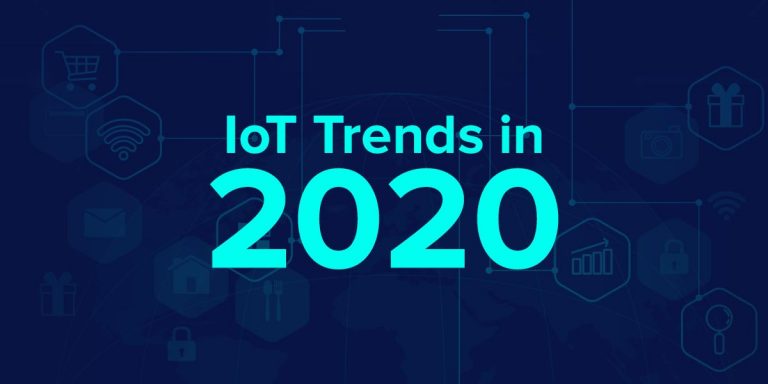The current Internet of Things trends makes life easier for the betterment of humankind. In this era of sensors, data insights derived from the data visualization tools and other techniques are transforming the world digitally by interconnecting with each other.
Here are some of the Internet of Things trends:
1. AI with IoT
The number one on our list of IoT trends in 2020 is Artificial Intelligence. The Internet of Things has been creating a revolution in redefining every industrial sector. FIFA world cup is no exception as well. The much-awaited all-time favorite tournament for football fans worldwide, successfully implemented artificial intelligence along with IoT technology to enhance the viewing experience and get accurate data analytics of their matches.
Hence Internet of Things recent trends is making its mark in the Sports sector as well in two main areas:
Player Stats :
- Wearable IoT devices along with AI technology updates about the player’s health stats like heartbeat rate or any injury alert in real-time.
- This data further helps provide recommendations for the training plan including workout schedule, diet plans, etc, Team tracking with historical analysis, helps to analyze the behavior patterns as well.
Soccer Ball Stats:
- By tracking any foul movements and illegal moves through the foul tracker.
- All movement info with speed, location, and condition.
2. Blockchain for securing IoT services
With an increasing number of connected devices that are expected to reach 20 billion by 2023, content should also be protected with less data breach. Hence, Blockchain technology is the coolest and one of the top IoT trends in 2020, which helps to protect IoT data, services, and devices.
“According to an article published in Gelmato.com in 2019, blockchain technology has gained momentum from 9% to 19% in the last 12 months.”
The transactions made on the blockchain are entirely secured with end-end encryption so tampering or breaching of data is completely impossible.
3. Edge Computing
All the data that is sent and received from the millions of connected devices is saved to the cloud for data storage. However, to reduce the network traffic, edge computing is one of the current IoT trends which drastically decreases the load.
In a nutshell, Edge computing for IoT devices work as follows,
- A part of the data is sent to the local storage device that is at closer proximity to the IoT device
- Sorting, calculating and filtering of the data is performed at this local storage device
- Finally, it is moved to the cloud. This tremendously reduces the network traffic.
4. Like Smart cities, Smart stores will be the new ‘IKEA’ store
Radio Frequency Identification Tags (RFID) is one of the crucial features for implementing the smart store which manages the inventory effectively. The data regarding the stock quantity, efficient monitoring of the storage can be leveraged by implementing IoT sensor devices into the retail department.
Several technologies play a vital role in creating smart stores.
- Heat mapping determines the geographical areas, products and shopping time of the customer.
- Shelf sensors add more items to prevent out-of-stock quantity.
- Predictive maintenance helps to replace any defective inventory stock.
5. Voice Sensors in multiple languages
Even though the average person bilingual English is accepted as a universal language, it’s not sufficient to address the needs of various regions globally. In fact, Mandarin surpassed English as the most spoken language in the world. Many IoT app development companies help to create software with voice sensors.
Keeping these in mind, Google was the first company to successfully launch multilingual voice assistance. Now, talk to Google Assistance in multiple languages.
6. Smart Mirror On Wall
One of the newest trends in the IoT is smart mirror technology which is gaining momentum among the millennials and GenX. For instance, in the healthcare industry, smart mirrors help to detect any diseases by face detection software.
With advanced knowledge of algorithms and the latest technology, one can create their own DIY Smart mirror project as well.
One of the popular Smart mirror projects is using Raspberry Pi and you also add voice assistant features using Alexa to get a more holistic experience.
7. Autonomous Vehicle
The autonomous car that does not depend on humans anymore to reach the desired destination became a reality through adopting sensational IoT technology and tools. Senior citizens or physically challenged can lead an independent life.
“A study from ITDP and UC Davis shows that 3 revolutions may occur in the transportation industry by 2050 through ride-sharing, automation and electric car – which reduces 80% of CO2 emissions globally”
Autonomous cars typically rely on powerful software and technologies like,
- Sensors
- Actuators
- Complex Algorithms
- Machine Learning
Hence, whether you enhance your customer journey through smart stores or increase the security of the connected devices through Blockchain technology, the evolution of the internet of things along with IoT data visualization techniques is here to stay. In addition, Industrial IoT and Digital Twin technology will drive various other industries like in healthcare and in the manufacturing sector to yield greater ROI.

